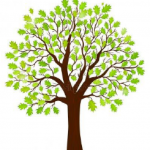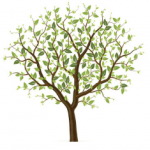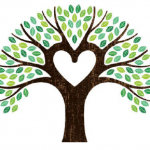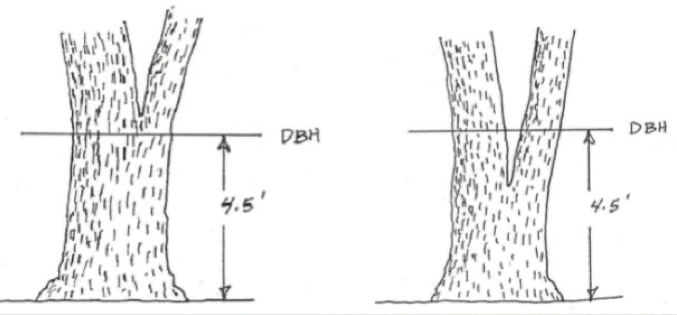Steve’s Tree & Hauling Service LLC – City of North Port License #24-00015591
WHAT IS A TREE?
- A living, woody, self‐supporting plant, which when mature will reach 10 feet or more in height, having main stems, and any one stem measuring three inches DBH.
- All rooted species of mangrove or two‐inch DBH scrub oak, including red mangrove (rhizophora mangle), white mangrove (laguncularia racemosa), black mangrove (avicennia germinans), buttonwood (conocarpus erecta), sand live oak (quercus geminata), myrtle oak (quercus myrtifolia), bluejack oak (quercus incana), and chapman oak (quercus chapmanii).
- All palms with more than four and one‐half feet of clear trunk
- This definition includes any tree planted, relocated, or replaced pursuant to the City Code.
WHO NEEDS A PERMIT?
Anyone wanting to:
- Remove
- Relocate
- Cause irreparable injury to a tree
- Initiate development when a tree exists on a property
The City of North Port requires a tree removal/relocation permit and payment of mitigation fees for ALL properties, including vacant or undeveloped land, unless it qualifies for an exemption. Furthermore, causing irreparable injury to a tree or the topping or sculpting of trees into a desired shape, other than the natural shape, is prohibited.
The basic exemptions relating to residential properties are:
Owner occupied residential lots after one (1) year since CO and
- The lot is five acres or smaller
- The lot is larger than five acres and the tree(s) are located withing 150 feet of the house
- Not in a conservation or preservation area
- Did not receive credit for conservation pursuant to a prior tree removal permit
- Trees were not part of an approved landscape plan
- House is not going to be demolished and reconstructed
- No heritage tree(s)
- Not within the Myakka River Protection Zone
- Not within a Canopy Road Zone (CRZ)
Additional Exemptions:
- The trees are exotic tree species on the most recent Florida Exotic Pest Plant Council Category I list of invasive species or any one of the following tree species: Brazilian Pepper, Punk or Melaleuca, Australian Pines, Carrotwood, Chinaberry, or Chinese Tallow.
- The tree(s) on residential property present a danger to persons or property
- Certain conditions of a declared emergency, government activities or agricultural activities
The City of North Port has 3 different categories of protected trees:
Heritage

- Any Native, single trunk 24” DBH or greater;
- Bald Cypress, Hickory, Live Oak, Sand Live Oak, Souther Magnolia, Southern Red Cedar that measure 80 points;
- Pine that measures 60 points;
- In the case of multi-stemmed trees where there is a union of wood above grade, the DBH shall be measured one each stem and added together to count as one tree;
- Must have a 70% or greater condition classification
To Calculate Points, Add The Following Together:
- Trunk diameter (DBH) – One Point Per Inch
- Height to the nearest foot – One Point Per Inch
- Average canopy spread to the nearest foot – One Point For Each 4′ (measure the longest and shortest diameters of the limb spread or drip line and divide by 2)
Protected

- A slash pine, longleaf pine, live oak, or laurel oak that has a DBH of 12″ to 23 7/8″
- Sabal palms with a minimum 4.5’ clear trunk
- Scrub oak located in a North Port scrub jay designated zone with a DBH of 2″ or greater
- In the case of multi-stemmed trees where there is a union of wood above grade, the DBH shall be measured on each stem and added together to count as one tree
Native

- An indigenous tree that has a DBH of 12 inches to 23 7/8 inches. In the case of multi-stemmed trees where there is union of wood above grade, the DBH shall be measured one each stem and added together you count as one tree.
DBH (Diameter at Breast Height)
Replacement trees meet the following requirements:
- Be a species of similar height and crown spread;
- Be Florida Department of Agriculture Nursery Grade No. 1 or better as per Grades and Standards for Nursery Plants;
- Be a minimum of eight feet (8′) high and three inch (3″) DBH when planted;
- Be a minimum of 25-gallon container size or have a minimum 2′ root ball if field grown;
- Be an approved tree from the Master Tree List*;
- Be placed so that they will develop freely and when mature will not crowd utility lines or other structures;
- Have a root ball planted at the proper height and in accordance with accepted nursery standards;
- Have a mulched bed at least three feet (3′) in diameter and three inches (3″) deep to conserve water and promote growth;
- Be staked, when necessary, in a way that will not injure the tree with broad straps of soft material around the trunk tied loosely enough to allow the trunk to move in the wind.
*Alternatives, with respect to size and species, may be approved if the applicant demonstrates that such substitutions will be consistent with the purposes and intent of the code.
Mitigation Fees
When trees are removed as part of a tree removal permit, mitigation shall be required to restore and biologically enhance existing green space and assure no net canopy loss. The following provides tree mitigation as a basis for offsetting the loss of values (aesthetic, ecological, monetary, etc.) from taking down a tree based upon its species and size.
Removal of a Heritage Tree – $100 per DBH
Removal of a Protected Tree – $50 per Mitigation Point As Follows:
- Slash Pines, Longleaf Pines and Sabal Palms – DBH divided by 3 = Mitigation Points
- Live Oaks, Laurel Oaks and Scrub Oaks – DBH = Mitigation Points
Conservation Credits Can Offset Mitigation Points As Follows:
- Heritage Tree To Remain – DBH x 3 = Conservation Credits
- Protected and Native Trees To Remain – DBH x 2 = Conservation Credits
- Master Tree List Trees and Sabal Palms To Remain – DBH = Conservation Credits
- Master Tree List Trees To Be Planted – DBH at planting = Conservation Credits
- Sabal Palms planted – DBH at planting = Conservation Credits (Up to 20% of the total mitigation points)
How To Apply For A Tree Removal Permit (Usually Takes 7 to 10 Days):
1. Fill Out Application and Mitigation Form – Click Here To Download or Print Application Form
2. Draw A Site Plan (Developed Lot) or Obtain A Formal Tree Location Survey (Required for all proposed activities involving trees eligible for mitigation and/or conservation on undeveloped lots). See below for requirements.
3. Take Application and Site Plan or Survey to North Port City Hall – 4970 City Hall Blvd
4. The City Arborist will conduct a site inspection and contact you with any concerns or to let you know that the permit has been issued.
5. The permit must be prominently posted on the subject property for the duration of the project. Once the project is complete, you must call the City for a final inspection in order for the permit to be closed. Any required replacement trees must be installed before the permit will be closed.
*It is important to remember to close all permits as soon as possible. Open permits are a problem for ownership transfers.
Site Plan and Tree Location Survey Requirements:
Site Plans and Tree Location Surveys must be at a sufficient scale and include the following:
- The shape and dimensions of the lot together with existing and proposed locations of structures, utilities and other improvements
- The location of all on-site native habitats and buffers
- The location of all trees eligible for mitigation and/or conservation, identified by common or botanical name and DBH
- The location of trees proposed to remain, to be transplanted, or to be removed
- Where clearing is occurring on part of a lot, only the trees in the area to be cleared and an additional 50′ need to be located
- Heritage trees shall be identified by DBH, height, the size of the rip line (in feet) and the proposed location of the tree protection barricades
- Groups of trees in close proximity (5′ spacing or closer) may be designated as a “clump” of trees, with the predominant species, estimated number and average size listed
- Limited clearing may be approved by the City Manager or designee to provide proper preparation of the tree location survey
- If existing trees are to be relocated (no mitigation fee if relocated on the same property), the proposed relocation for such trees, together with a statement as to how the trees will be protected during land clearing and construction and maintained after construction
- Statement indicating how any trees not proposed for removal or relocation will be protected
- Locations and dimensions of all setbacks and easements
- Statements and plans depicting grade changes
- Statement as to the form of root protection
- State the distance from tree trunk to change in grade with the required elevations certified by the project engineer
- Statement about any proposed tree plantings
Fine For Tree Removal Without A Permit (Residential):
- $100.00 per diameter inch at breast height (DBH) for each tree and $200.00 per DBH for each heritage tree up to a maximum of $5,000.00 per tree for conducting an activity that requires a tree removal permit without first obtaining a tree removal permit.
- In a case where tree removal has occurred and the number of trees removed is unable to be determined, $15,000.00 fine shall be assessed per each 10,000 square feet of lot/parcel or fraction thereof. Each 10,000 square feet constitutes a separate violation.
Click Here To See The Complete North Port Tree Ordinance
Click Here For Help With Tree Identification
Click Here For North Port Scrub Jay Information
Click Here For Information On Underbrush Only Removal
How to Contact the City Arborist:
Email: treeremoval@northportfl.gov
Natural Resources Manager: 941-429-7033
City-Owned Trees, Public Works Department: 941-240-8050
Planning Division: 941-429-7156
DISCLOSURE: The summary shown above is for informational purposes only and is intended as a quick reference for our customers. While every effort has been made to keep the information current, there may be changes or updates to the code that we are unaware of. The information on this website should not be used as a citation of the law. We recommend that you contact the proper government office directly to verify any information found on this website.

